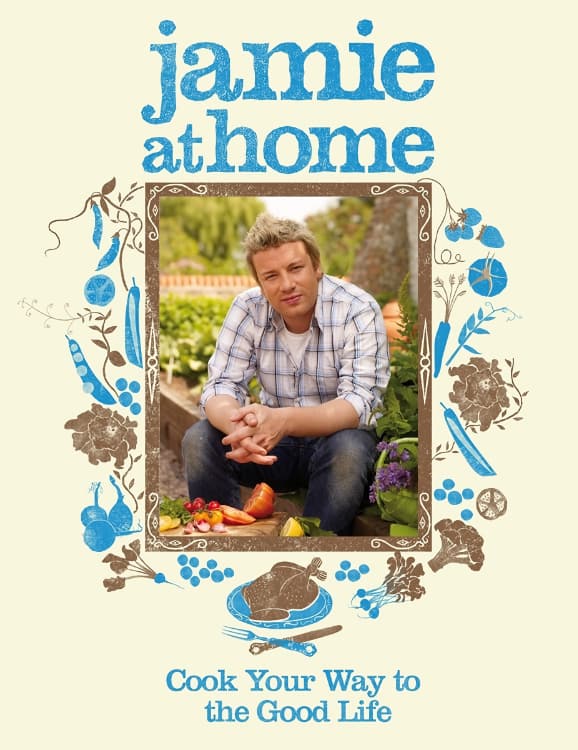Jamie At Home by Jamie Oliver
Oliver, Jamie
ISBN: 9780718152437
Publisher: Michael Joseph
Jamie Oliver, that much loved cheeky chap who has won the hearts of many a mum around the world has brought us his vision of the Good Life. Being a cookbook from Jamie, there would be some who will simply buy it, but I am going to look at the book as it stacks up if written by an anonymous author. Is it worth anything beyond Jamie's name?
To reduce stress, the number one killer throughout the Universe, as Douglas Adams would have us believe, when I started to write this review, with the book sprawled out on my seat on a train, a fellow traveller leaned over and told me how good it was! So, why did he find it so good? Well, to agree with my fellow traveller, the book is full of great recipes that are aimed at the home cook. Most are easy to follow, and they are written in a way to inspire you both to try more complex recipes and, more importantly, to think fresh, local, seasonal ingredients.
It won't be a surprise for any reader to learn that Jamie Oliver has split his book up into four main seasons. Each section then concentrates on just a few key ingredients. It is this approach that will help the reader understand what he is trying to achieve, that is to understand ingredients are not something you load up in the supermarket, regardless of when it should be in season, but instead use what is freshest, bought from farm shop, farmers market or the local greengrocer. [Jamie does go on a bit about supporting farmers by telling us buying direct gives the farmer a better return, but he is still the man in front of that large supermarket chain in the UK, which along with its rivals have brought farming to its knees. Give it up Jamie, if you are so committed!]
As mentioned, within each of the four parts, the book looks at just a few main ingredients, as in Spring, where he brings recipes around Asparagus, Eggs, Lamb and Rhubarb. So, looking at each ingredient the section gives you an introduction, recipes based around it, and finally growing or buying advice. Its format works well, as in the section on Strawberries, where Jamie wax lyrical about his love of the delicate Strawberry, then tells us about squashing them under ice-cream. It does bring the memory and smells of those far-off days, when strawberries smelt and tasted so different to the mass produced offering from the supermarkets.
The one thing I love about seasonal food is the taste! The quality of fresh, local ingredients is something that makes it worth the effort to obtain. Whether you go to a local farmers market, or to a good grocer or butcher, buying seasonal ingredients that haven't been flown half way around the world not only tastes better, it ensures the farmer gets a fairer price than if he had to sell through the supermarkets. Within Jamie at Home there is encouragement given to the reader to not only buy from farmers markets, but to try growing your own. As Jamie managed to grow mixed salad leaves in the middle of London, he shows that you don't need a large space to succeed. If this book inspired you to try doing so, then I think Jamie Oliver has achieved what he set out in bringing us this book.
